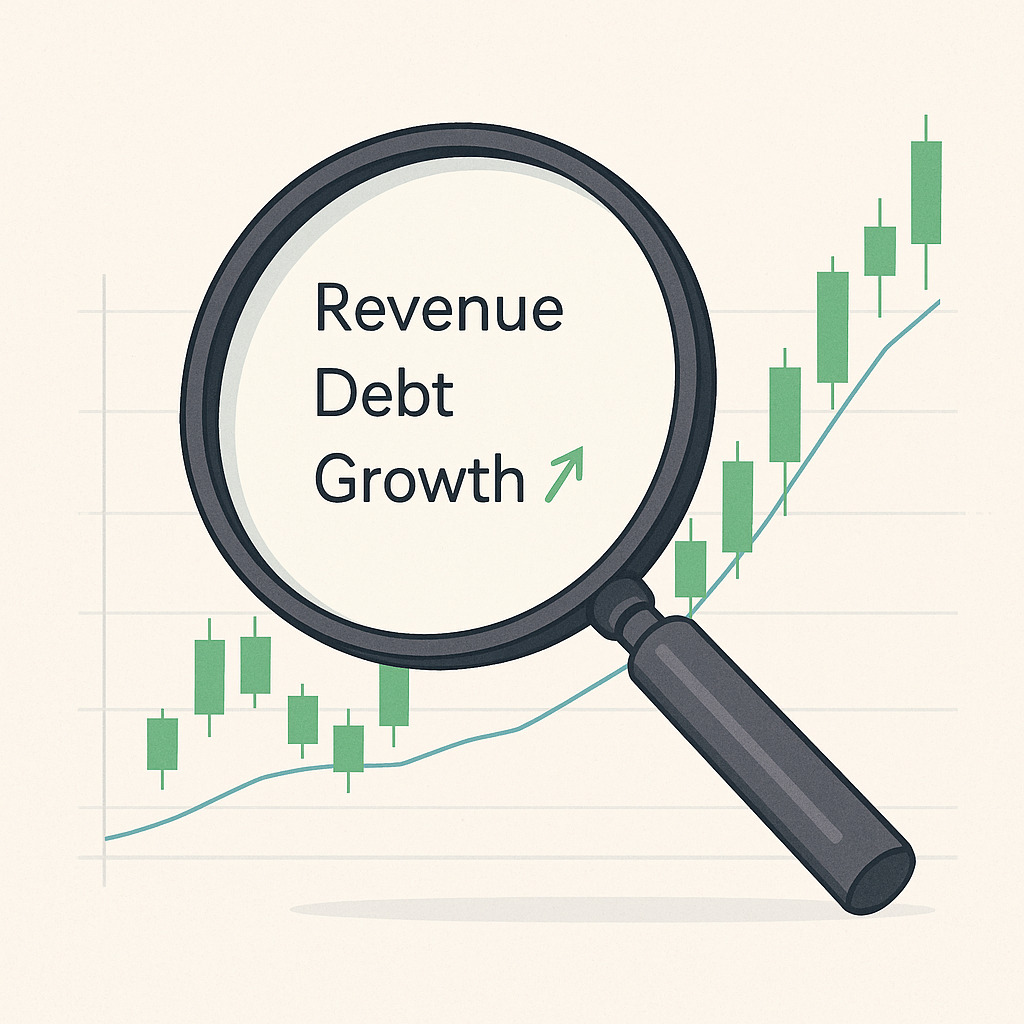How to Research Stocks Without Getting Overwhelmed

When I bring up the stock market and how to research stocks, most people either get bored or freeze up. And if I mention P/E or D/E ratios? They’ll look at me like I’ve got two heads.
I get it. Turn on CNBC as a new investor and they may as well be speaking an alien language. But doing research and understating what you’re investing in is fundamental and it doesn’t have to be complicated.
Keep it Simple
Instead of getting lost in confusing jargon, break the process into three simple, repeatable steps. Here’s how to do it:
Step 1: Understand the Business
- What does the company actually do?
- How do they make money?
- Is it an industry you understand well enough to explain to a child?
If you can’t answer these questions, skip it.
Step 2: Check the Financial Health
- Review the basics: Revenue growth, profits, and debt. A company that’s consistently making more money and not drowning in debt is usually in a good place.
- Here’s the key: You don’t need to crunch every ratio or line item. Just pull up a quick snapshot. If revenue is climbing, profits are steady, and debt isn’t out of control, you’ve just checked the fundamentals without getting buried in numbers.
Step 3: Compare with Competitors
Once you know the company and its financial health, stack it against its rivals to get a complete picture.
Researching a fast food stock? Compare McDonald’s to QSR, YUM, and Starbucks. Does your pick hold its own, show stronger growth, or is it lagging behind?
Sometimes the leader is the best investment. Other times, the hungry up-and-comer gaining ground is your best bet.
Use Tools to Dumb it Down
Quarterly and annual reports contain everything you need to know about a company but let’s be real, you’re not reading 200+ pages of corporate speak.
Here’s what to do instead:
- Use AI: ChatGPT (with prompts from my free guide) can summarize earnings reports, explain financial jargon in plain English, or give you a quick pros/cons breakdown. Hours of research done in seconds.
- Stock Screeners: Tools like Finviz help you filter thousands of companies down to a shortlist by sector, growth rate, dividend yield, or market cap. Perfect when you don’t know where to start.
- Public Sites: Yahoo Finance, Seeking Alpha, Barrons, and even Google Finance give you the essentials fast. You can pull up revenue, profits, debt-to-equity, and EPS at a glance.
Think of these tools as your research GPS. They won’t drive the car for you, but they’ll get you pointed in the right direction. Saving time without replacing your judgement.
My Quick Screen (Swipe-Left Process)
When I’m pressed for time and want to quickly understand if a company is worth investigating further these are the items I review first.
- Revenue: Is it growing or shrinking?
- Debt: Is it manageable or out of control?
- Leadership: Do they have a track record of delivering?
- Pipeline: What’s next? New products, services, or markets?
If a stock fails this quick screen, I don’t waste anymore time. Think of it like dating: if the company isn’t growing (boring), has massive debt (broke), or poor leadership (no vision), it’s an immediate deal-breaker. Swipe left and keep it moving.
Other Red Flags to Avoid
- Meme stocks. They run on hype, not fundamentals. (Remember GameStop.)
- Speculative traps. Companies with no profits and no path forward, just promises.
Sure, you can make money chasing meme stocks or risky plays you see online, but understand it’s a gamble at that point not an investment. And by the time the average person hears about it, most of the money has already been made and you’re left holding the bag.
How to Avoid Research Altogether
Here’s the truth: if you want to be a good investor, you can’t avoid research completely. But if you don’t want to dig into individual companies, ETFs are your best friend.
An ETF (exchange-traded fund) lets you own a bundle of companies in one shot, like buying a slice of the entire S&P 500 instead of betting on a single stock.
Think of it like the snack aisle: you don’t have to pick just Oreos. With an ETF, you get a piece of the whole shelf ; chips, cookies, crackers, and all the other goodies.
Final Word
Stock research doesn’t need to paralyze you. Break it into simple steps, use tools to speed it up, swipe left on obvious deal-breakers, and know when to walk away. The more you practice, the easier it feels.
👉 Want a head start? Download my free guide The Savvy Investors AI Toolkit below and get a set of prompts you can use right now to simplify your stock research.